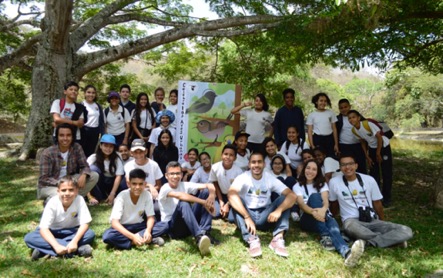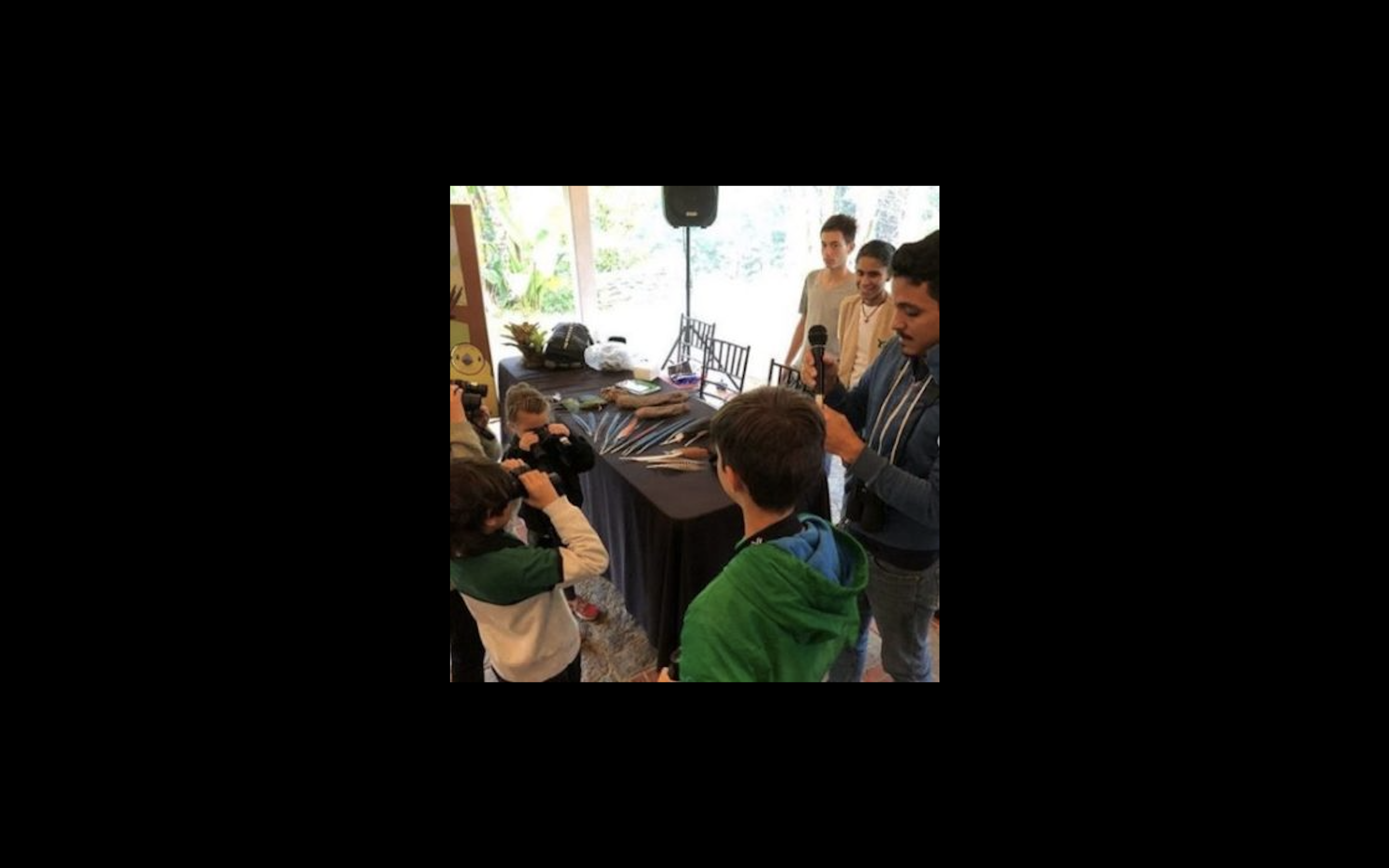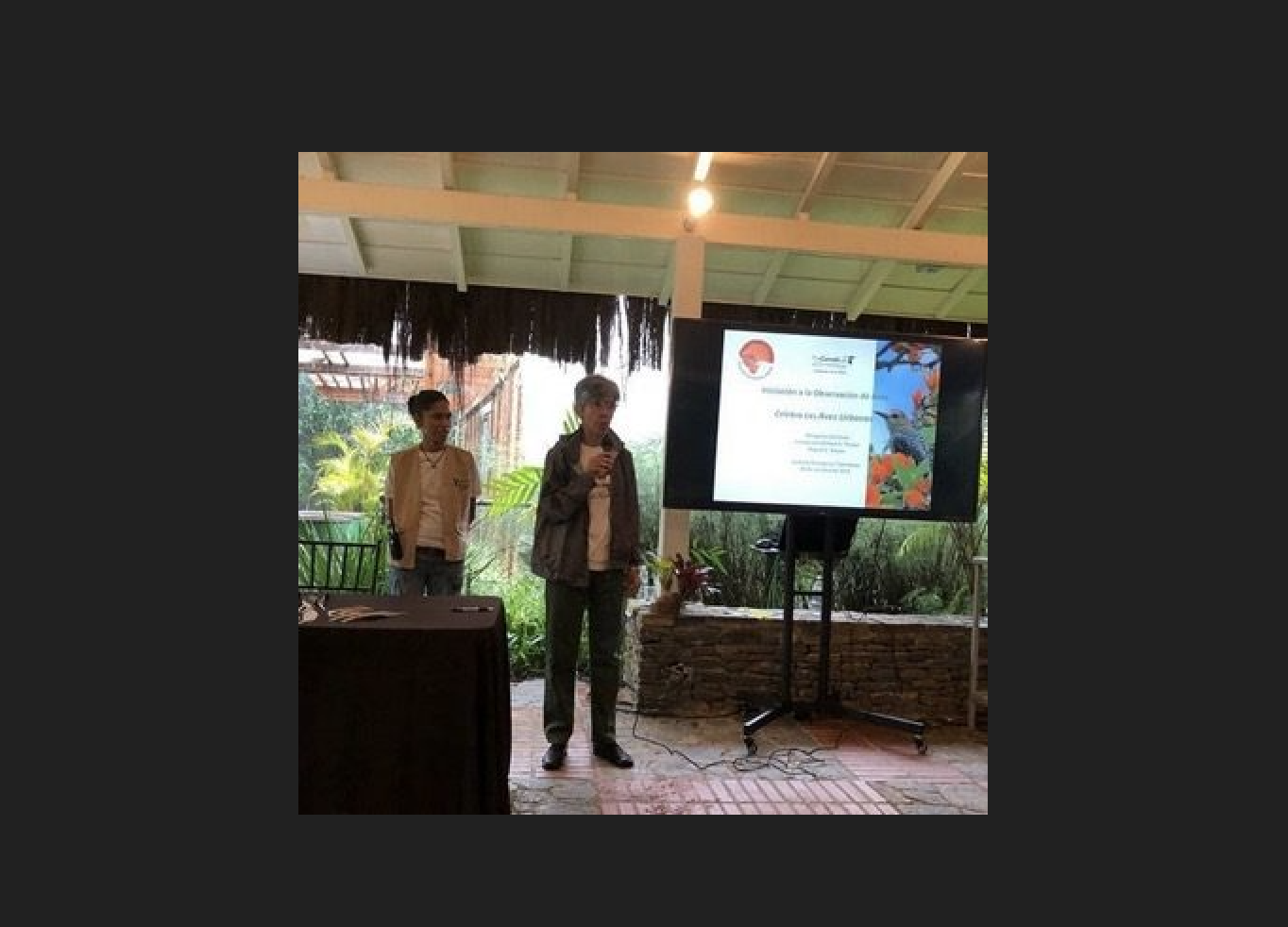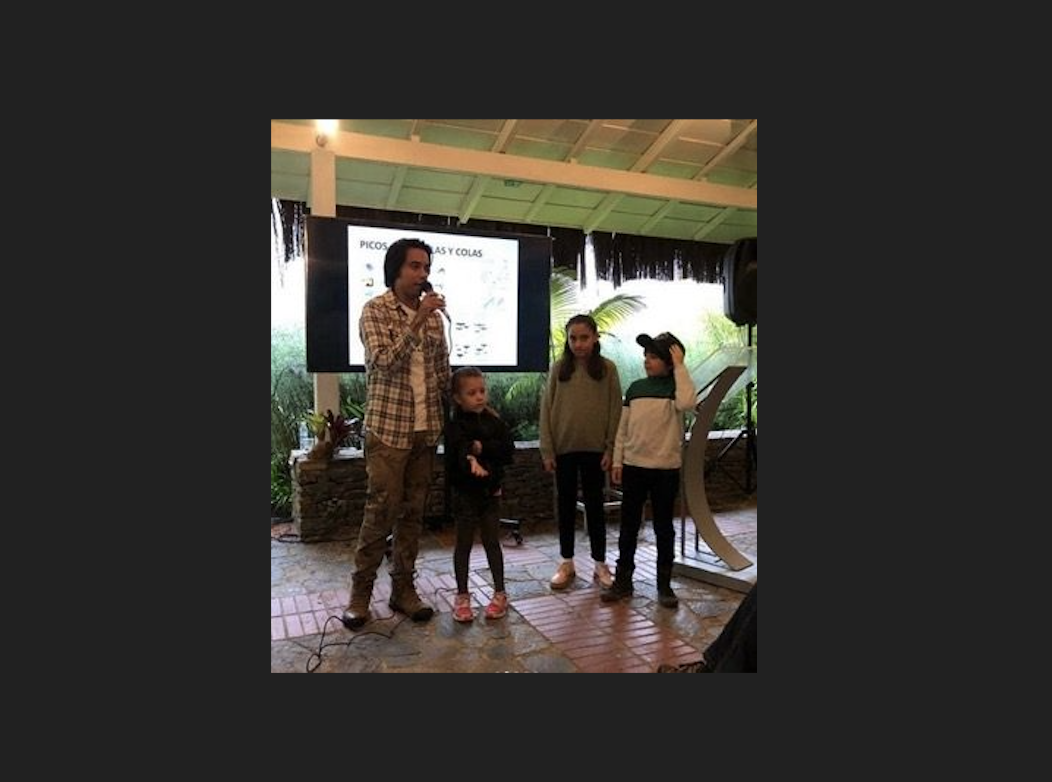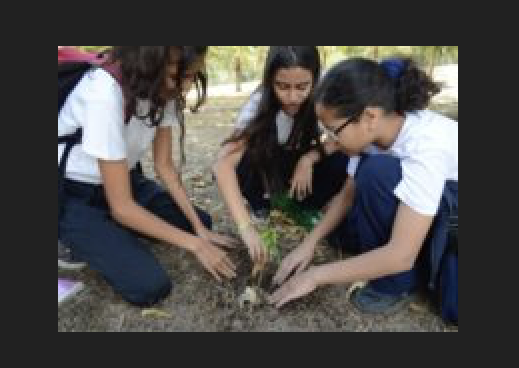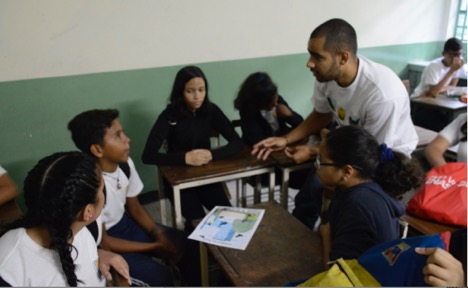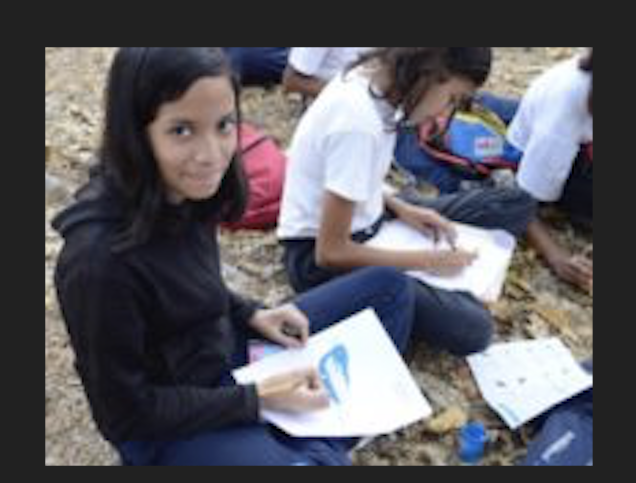The Parque Zoológico Caricuao (Caricuao Zoological Park) located in the city of Caracas, Venezuela, held many entertaining and educational bird conservation activities for children, youth and their teachers. Thanks to the coordination of Margarita Martínez, Curator of the Colección Ornitológica Phelps (COP: Phelps Ornithological Collection) and Professor Miguel E. Nieves of the Unidad Educativa Nacional “Rafael Seijas”, (National Educational Unit “Rafael Seijas”) many students and teachers participated in the event. The activities were supported in part by a Celebrate Urban Birds mini-grant of the Cornell Lab of Ornithology.
A talk on local birds opened the event. Participants spoke animatedly about the birds they usually see in their neighborhoods. They also discussed the importance of birds in their community. After the talk, it was time to go bird watching! Students and teachers had the opportunity to walk through the park and use binoculars to watch birds. They loved seeing the magnified colors and movements of the birds! A list of local birds with their images and names was passed out to the participants! The list helped the students keep track of the birds they saw and identify them using the helpful pictures. The COP leaders guided small groups of participants around the zoo’s artificial lagoon to watch and identify birds. Participants were thrilled when they spotted familiar birds!
There was also a workshop about the birds’ body parts and their biology. Participants were then able to recognize the different body parts of the birds, helping them better distinguish the differences in the local birds. Participants and leaders spoke on the numerous threats that wild birds face, and how these threats have led to a large bird population decline in Venezuela and around the world. Together the participants came up with possible actions that could lessen their negative impact and help conserve birds.
The inspiration that the participants felt from the talk, propelled them to plant fruit trees like Soursop (Guanabana, Annona muricata), donated by the Centro Ecológico San Pedro (San Pedro Ecological Center). Planting these trees helped young people and teachers to become more aware of the importance of plants as food, shelter and nest sites to birds. This amazing activity was educational and it also resulted in a concrete action to help the birds of the region.
The students formed several teams. Each team had an adult for supervision as well as materials with bird silhouettes and their potential location in urbanized areas. Carrying their materials, the groups went out to observe birds! They tried to recognize them by their silhouettes. It was great to see students excitedly learning more about their local birds and spotting them in their surroundings. The teams also talked about some tips for bird watching in the park including quiet observation, as noise can scare away nearby birds.
Arts and crafts were also included! Participants drew their favorite birds or the birds they observed on their walk through the park. It was great to see pictures of so many birds. Teachers then helped organize the students to take pictures on the mural designed with three common bird species of urban areas: The Black-faced Grassquit (Melanospiza bicolor), House Wren (Troglodytes aedon) and the Saffron Finch (Sicalis flaveola). They had a lot of fun!
At the end of the event, each student took home a plastic container. This simple act symbolized a call to raise awareness among young people’s families to eliminate plastic bottles from residential dumps that pollute cities. Teachers and group leaders also received certificates for their participation. The organizers, group leaders, and teachers intend for the educational activities about birds and their habitats to continue in the classrooms with even more students and community members participating, too.
A special thanks to Margarita Martínez, COP’s Curator, and Professor Miguel E. Nieves of the Unidad Educativa Nacional “Rafael Seijas”, (National Educational Unity “Rafael Seijas”). Also, a special thanks to the Colección Ornitológica Phelps (Phelps Ornithological Collection (COP)) group leaders and the Centro Ecológico San Pedro (San Pedro Ecological Center). Thank you very much to all the participants, photographers, and everyone who helped make the event unforgettable! The COP thanks the Cornell Lab of Ornithology for the funds and support that came along with the mini-grant.
Written by Ashley Calderón and Edited by Julia D. Luna
